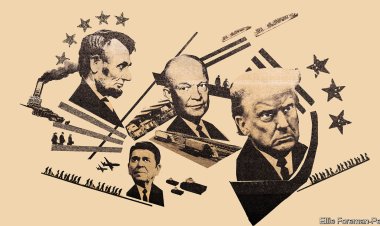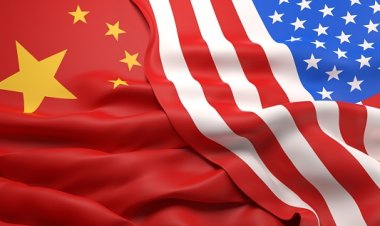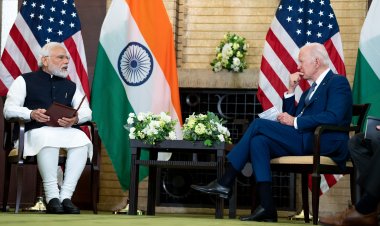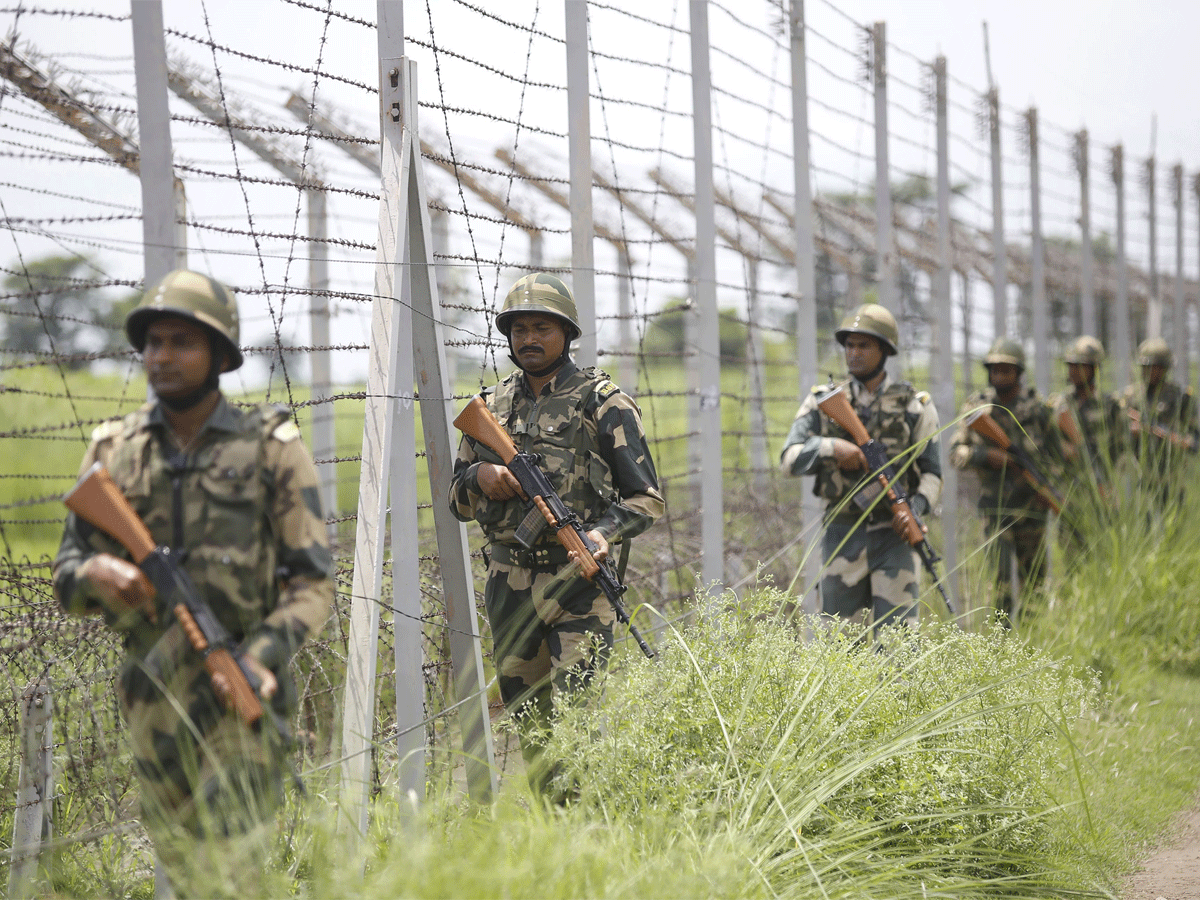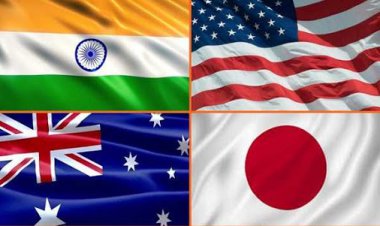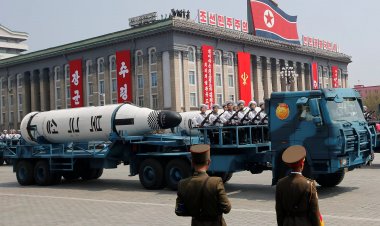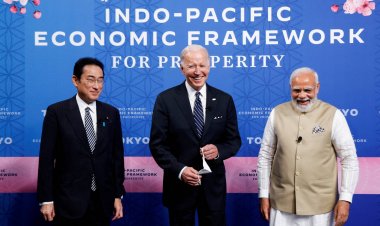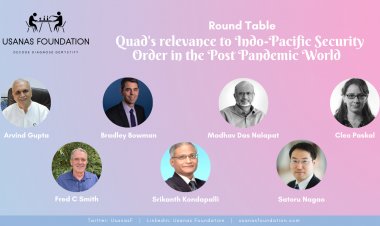Explained: Indo-US defence cooperation—Past, Present and Future
The following article explains the defence cooperations between India and the US, which have evolved post the deadly 9/11 attacks. The article looks at current areas of cooperation between both nations, evaluating them and talking about potential future areas of cooperation between both powers.
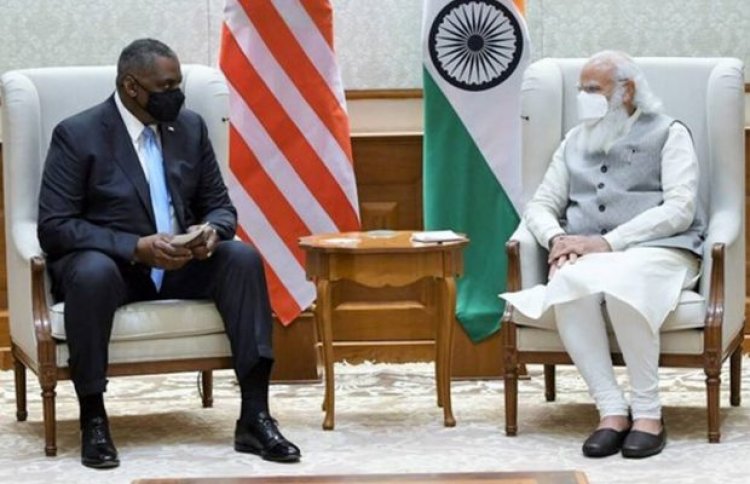
Explainer
By Monaps
The watershed moment in Indo-US relations took place towards the end of U.S. President Bill Clinton's term in March 2000, primarily due to economic reasons. Post 9/11 attacks, India offered assistance to Washington in all possible ways. This further contributed to the normalisation of relations and removal of previously imposed sanctions on India after conducting nuclear tests in Pokhran. With improved diplomatic relations in the 1990s, the foundations of a strong defence relationship were being laid parallelly.
Both India and the United States have come a long way in overcoming the “hesitations of history” and Cold War-era baggage to build robust relations across diverse sectors—most importantly in defence. For example, the Malabar Exercise—which has been conducted since 1992, with a brief hiatus in between—has now been expanded to include Japan and has further consolidated the synergy and interoperability between the navies of these countries. In addition, India now conducts more military exercises— including a tri-service exercise since 2019— with the United States. This is emblematic of the deepening defence ties between the two countries. However, there is still scope for both countries to do more and deepen defence cooperation further.
Expanding defence cooperation with the U.S.
A crucial aspect of defence cooperation with Washington involves the signing of four foundational agreements. These agreements are aimed at facilitating interoperability and cooperation between the militaries of the U.S. and the signing party. With the signing Basic Exchange and Cooperation Agreement (BECA) in the 2+2 meeting held last year, India is now a signatory to all four foundational agreements. In 2002, the General Security of Military Information Agreement (GSOMIA)—one of the four foundational agreements—was concluded between India and the US. Subsequently, following which New Delhi signed two more foundational agreements—the Logistics Exchange Memorandum of Agreement (LEMOA) and the Communications Compatibility and Security Agreement (COMCASA)—in 2016 and 2018, respectively.
The formalisation of defence relations received further impetus with the signing of the Framework for Defence Cooperation in 2005, renewed in 2015 as ‘New Framework’. In addition, the finalisation of the US ‘Defence Technology and Trade Initiative’ (DTTI) in 2019 also helped boost defence relations by facilitating cooperation in new areas of technological development and expanding U.S.-India business ties.
For a long period, closer Indo-U.S. cooperation was deterred by apprehensions in the Indian strategic community about the loss of India’s ‘strategic autonomy. Many felt that India’s ratification of the agreements would be perceived as New Delhi entering into a formal ‘alliance’ with Washington, abandoning India’s long-standing ‘non-aligned’ heritage. However, contrary to these assumptions, strategic autonomy—more appropriately described as the “exercise of choice driven by sovereign considerations and interest”—has been enhanced by signing these agreements.
The bilateral agreements are of essential value in securing India’s national interest as they would enable the Indian Armed Forces to operate military equipment using encrypted technology, access satellite and maritime related images, which can be used to track progress on its operations, take advantage of U.S. technologically superior military logistics, equipment’s and more.
GENERAL SECURITY OF MILITARY INFORMATION AGREEMENTS (GSOMIA)
GSOMIA was the first foundational agreement signed between India and the US. It facilitates interoperability between the two militaries and the sale of high-end technology. The agreement allows sharing classified information from the US government and American companies with India and Defence Public Sector Undertakings (DPSU)—but not with Indian private companies. This restriction on sharing data with private companies was lifted with the signing of the Industrial Security Annex (ISA) to the GSOMIA during the Indo-US 2+2 inter-ministerial meeting in 2019. It will enable the greater industry to industry collaboration for co-production and co-development in the defence sector. The GSOMIA and ISA align with New Delhi’s ‘Make in India’ Initiatives in the defence sector. GSOMIA and ISA are a major boost for the Indian defence industry and enable the secure transfer of classified critical defence technology.
LOGISTICS EXCHANGE MEMORANDUM OF AGREEMENT (LEMOA)
LEMOA was concluded under the Acquisition and Cross Service Agreement (ACSA) authority. The United States has signed LEMOA with most of its allies and partners, totalling 88 countries worldwide. In South Asia, this agreement exists with Afghanistan, Maldives, Pakistan and Sri Lanka, apart from India. After more than a decade of negotiations with India, and removed the hurdles for establishing an automatic process of approvals for the two militaries to share each other’s bases for various operations.
The basic purpose of LEMOA is to enable the deployed forces to share logistics support to meet unforeseen requirements that might arise in the field. By enabling countries to plug into the logistics systems of the other country, considerable costs are avoided since each country provides support to the other on a quid pro quo basis. There are no surcharges on the costs of logistics supplies and services provided. Exchanges of equal value or replacements in kind are permitted to balance the accounts. However, if there is an imbalance, there is an annual reconciliation of the exchange accounts. Such logistics support transfers come into play primarily during wartime, combined exercises, training, deployments, contingency operations, humanitarian or foreign disaster relief operations or certain peace operations under the United Nations Charter or for unforeseen or exigent circumstances.
Implementation of this program is via the US combatant commanders; therefore, India would normally interface with the US Pacific Command (PACOM) or military service on most of its ACSA transactions. In addition, the absence of LEMOA previously limited opportunities for cooperation in logistics. With the LEMOA now in place, the US is no longer prevented from providing resupply to Indian ships in transit or participating in authorized port visits, joint exercises, joint training, humanitarian assistance and disaster relief efforts.
COMMUNICATION COMPATIBILITY AND SECURITY AGREEMENT (COMCASA)
Communication and Information on Security Memorandum of Agreement (CISMOA) are intended to provide documentary justification to release command, control, communications, computer intelligence, surveillance, and reconnaissance (C4ISR) data to a foreign country. This includes data feeds that provide the “common operational/tactical picture”. Also included within this general program's scope are configuration management, common standards, information security, information assurances, authority to engage in reciprocal use of each other’s communications systems, and the framework for exchanging telecommunications support and services related to establishing an interconnection. COMCASA is the customized version of CISMOA, specifically to meet Indian demands.
This agreement addresses several issues related to communications interoperability. As a result, it is a bit more prescriptive than pure framework agreements such as LEMOA and BECA—although many of the actual terms have been spelt out in specific annexes to the agreement that can be included (or not) at a later stage, based on the nature of the defence relationship.
The US-India COMCASA requires India to safeguard sensitive and secure US-sourced military communication equipment. In turn, it permits India to use previously restricted communication channels to enable closer interoperability between the US and Indian military assets and those of friendly armed forces that have also concluded a similar agreement with the United States.
Outside of interoperability, COMCASA will also open up the possibility of Indian military units gaining access to a secure common tactical picture, allowing Indian Navy and Air Force surveillance aircraft and fighters to receive data from the US-friendly counterparts during exercises or operations. Additionally—given India’s access to previously restricted US defence technology exports, following its 2016 designation as a Major Defence Partner—COMCASA will open up India importing US systems un-encumbered by possible limitations on guidance communication and sensor technologies. Finally, COMCASA can serve as the authority for the US Department of Defence to exchange telecommunication supplies and provide services under a bilateral or multilateral arrangement that is premised on the exchange of communications support and related supplies and services of equivalent value.
Issues about configuration management, tactical command and control standards, interoperability procedures, configuration management documentation and other technical details can also be mapped to access each other’s network of telecommunication systems for its purposes. First, the agreement has a heavy emphasis on the adoption of standards for interoperability in communications. Secondly, COMCASA also relates to communications security (COMSEC)—including the furnishing of COMSEC materials, crypto-logic support, standards for accountability and COMSEC account management to enable the secure transmission of intelligence and communications security, including training of Indian personnel. Additionally, the sale of systems that include US COMSEC requires a COMCASA agreement. In such cases, COMCASA provides the legal framework for transferring COMSEC associated with the hardware and software systems being sold.
BILATERAL EXCHANGE AND COOPERATION AGREEMENT (BECA)
BECA enables the sharing of a range of geo-spatial products, including access to mapping and hydrographic data, aeronautical and flight information products between the US and India. It will allow India to use America’s expertise in geospatial intelligence. In addition, it will help enhance the military accuracy of automated hardware systems and weapons like cruise, ballistic missiles and drones. The agreement would also allow India to access a range of topographical, nautical, and aeronautical data, engage in subject matter expert exchanges and receive training at the US National Geo-spatial Intelligence College. For India, of particular interest is access to the US National Geo-spatial Intelligence Agency’s (NGA’s) geospatial information bank. The BECA agreement also enables India access to advanced navigational aids and avionics on US-supplied aircraft.
The terms of the agreement envision reciprocal exchanges of data for defence, peacekeeping or humanitarian assistance—without any royalties or license fees—and are designed to facilitate mutual technical assistance and joint data gathering (including hydrographic data in uncharted waters via surveys). The usual terms also provide for joint visits of people involved in implementing projects under the agreement, no commercial or third-party transfers of the data exchanged, and the usual language in DOD agreements to mutually waive claims and resolve disputes through negotiation.
BECA is intended to function as an umbrella agreement wherein various components of DOD/ NGA and their Indian counterparts would conclude subsidiary arrangements on a one-time or semi-permanent basis for the exchange of specific types of data and data feeds. Examples include data exchange of mapping data for a particular exercise or agreement, producing aeronautical and nautical charts, supporting a particular defence system, or an agreement to conduct a joint hydrographic survey in uncharted territories.
Future cooperation
India and the US have come close in recent years, seeking ways to balance China’s rising influence across Asia, especially in Pakistan, South East Asia and the Indo-Pacific region. India’s weapons procurement from the US reached a record-high $3.4 billion in 2020. The US is India’s fourth major defence partner after Russia, France and Israel. Post-COVID outbreak and the renewed interest in the ‘QUAD’, the signing of the four foundational agreements will enable Indian defence forces, especially the Indian Air force and the Indian Navy, to operate seamlessly. The agreements will further cement US-India Strategic Partnership. They will enhance the operational efficiency of the Indian Armed Forces and increase the interoperability with the US Armed Forces. Evidently, the building blocks for a robust strategic relationship with the United States are now in place, but the major challenge will be operationalising the existing agreements and arrangements.
However, given the strategic convergence between the two countries, especially in Indo-Pacific, one can expect them to also act in synergy. It is crucial to keep up the momentum in relations and talk constructively, especially on contentious issues such as India’s S-400 missile deal with Russia, which Washington objects, U.S. FONOP’s in India’s EEZ’s. Sustained dialogue and mutual acknowledgement of each other’s strategic and national interests can help alleviate such challenges. Concentrating the foreign policy debate in India on labels rather than policy content and action has done more harm than good to bilateral relations. It must be recognized that although India rejects alignment as a concept, it is not averse to partnerships. Over the past two decades, expanding ties with the U.S. has not suffocated India’s strategic autonomy. New Delhi retains its freedom of action on all core national security issues.
The strategic cooperation between the two nations is expected to further growth under the current Biden administration. While China’s rise is a catalyst for the strategic convergence between New Delhi and Washington DC, the ultimate aim should be the joint vision of a free, open and rule-based Indo-Pacific. The Indo-US relationship is multi-faceted. Therefore, sustained efforts must be made to make equal progress on the trade and economy front.
The author is a serving army officer interested in Geopolitics and military affairs. A graduate of NDA and has completed Masters from Delhi University, Department of Social Work.


